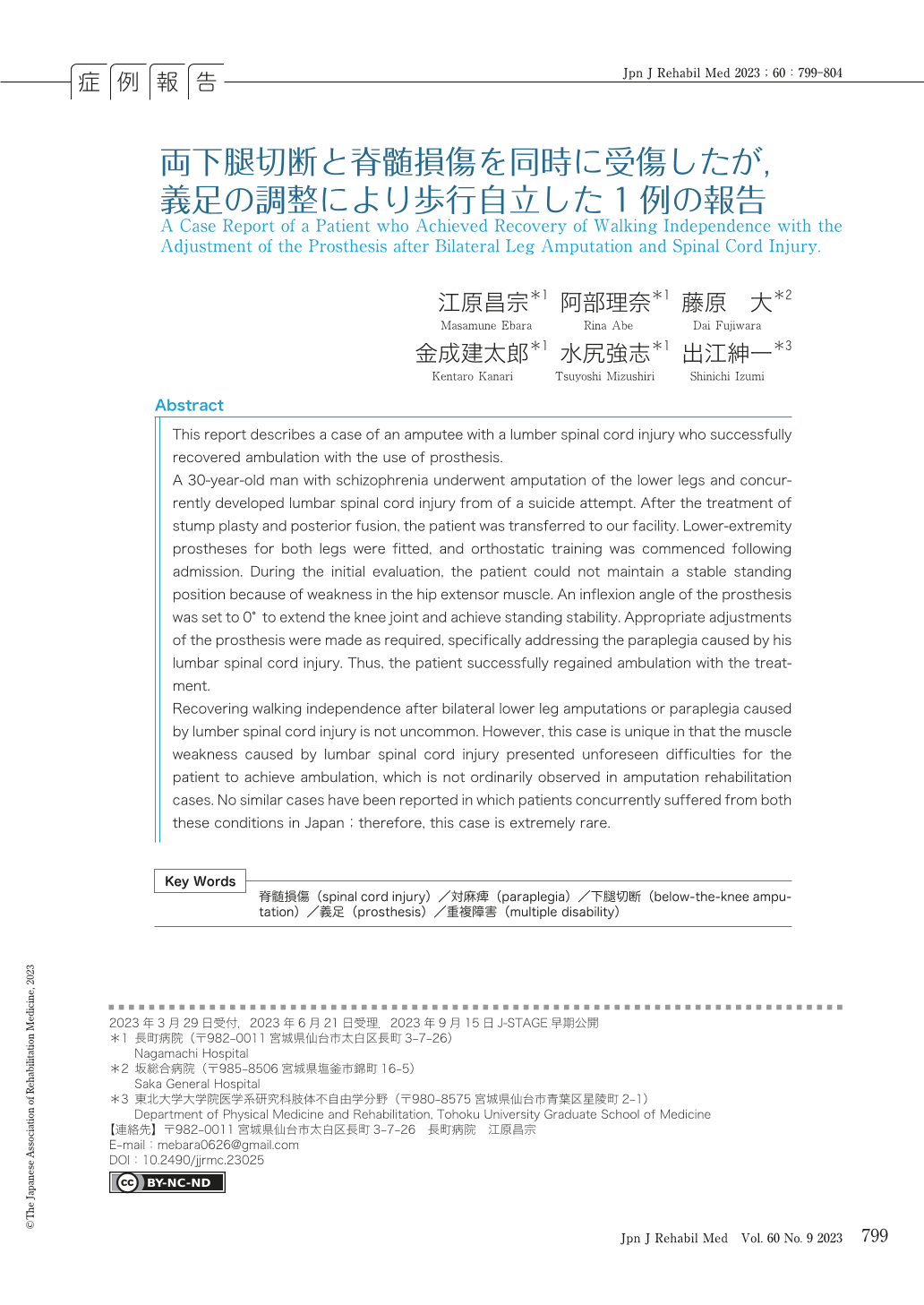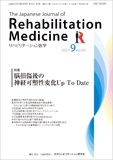Japanese
English
- 販売していません
- Abstract 文献概要
- 1ページ目 Look Inside
- 参考文献 Reference
はじめに
本邦において,両下肢切断と脊髄損傷の合併症例が歩行修正自立を得た報告はない.両疾患ともに年間発症数はおよそ1万人未満と推定され1, 2),合併する症例は非常にまれなケースであると思われる.
今回,自殺を企図しての電車への飛び込みにより受傷した両下腿切断と脊髄損傷の合併症例を経験した.両下腿切断と脊髄損傷による軽度対麻痺と個々の疾患をみれば歩行獲得は可能な症例であったが,両疾患の重複により歩行獲得に難渋した症例だった.対麻痺を,義足アライメント調整や歩行補助具の選定によって補い,平地歩行修正自立となった.本報告に際して本人画像を用いて学会や論文で症例報告を行うことを,患者本人より書面を用いて同意を得ている.
Abstract This report describes a case of an amputee with a lumber spinal cord injury who successfully recovered ambulation with the use of prosthesis.
A 30-year-old man with schizophrenia underwent amputation of the lower legs and concurrently developed lumbar spinal cord injury from of a suicide attempt. After the treatment of stump plasty and posterior fusion, the patient was transferred to our facility. Lower-extremity prostheses for both legs were fitted, and orthostatic training was commenced following admission. During the initial evaluation, the patient could not maintain a stable standing position because of weakness in the hip extensor muscle. An inflexion angle of the prosthesis was set to 0° to extend the knee joint and achieve standing stability. Appropriate adjustments of the prosthesis were made as required, specifically addressing the paraplegia caused by his lumbar spinal cord injury. Thus, the patient successfully regained ambulation with the treatment.
Recovering walking independence after bilateral lower leg amputations or paraplegia caused by lumber spinal cord injury is not uncommon. However, this case is unique in that the muscle weakness caused by lumbar spinal cord injury presented unforeseen difficulties for the patient to achieve ambulation, which is not ordinarily observed in amputation rehabilitation cases. No similar cases have been reported in which patients concurrently suffered from both these conditions in Japan;therefore, this case is extremely rare.

Copyright © 2023, The Japanese Association of Rehabilitation Medicine. All rights reserved.


